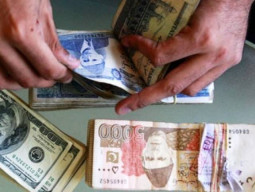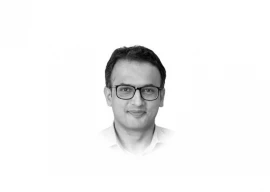
In 2001, Afghanistan was invaded by an international force under a UN Security Council Chapter Seven resolution after al Qaeda, based in Afghanistan and Pakistan, successfully launched a terrorist attack on the United States. Under its charter, Nato invoked a mutual defence clause in sympathy with the US and sent in allied troops under the name of the International Security Assistance Force (Isaf) while America sent in its army under the rubric of ‘Enduring Freedom’. After 10 years, the war remains inconclusive and is being rated a defeat for America. There are no victors.
Then-US President George W Bush, who decided to respond to the al Qaeda attack, thought he could also attend to unfinished business with Iraq’s dictator Saddam Hussein and invaded Iraq, this time without the UN sanction, alienating some of the very allies who were fighting for its cause in Afghanistan. Many say that this ‘distraction’ caused ‘complications’ in the conduct of war in Afghanistan, and attribute to it the final decision to withdraw under President Barack Obama. But there were other complications, and the big one, at least in the eyes of the Americans, was Pakistan.
Pakistan had fought an earlier war as a frontline state against the invasion of Afghanistan by the Soviet Union. That war began after 1979 and America chose Pakistan as its major ally in it. A deniable war was fought by ‘non-state actors’ from the Pakistani hinterland and was concluded with a Soviet withdrawal ten years later. As the Afghan war heated up, millions of Afghan refugees poured into the neighbouring states of Iran and Pakistan.
Pakistan was host to the warrior militias of Afghanistan. It handled the weapons the allies sent in for the mujahideen and played favourites with the jihadi outfits, giving the lion’s share to the Hezb-e-Islami of Gulbuddin Hekmatyar, who was amenable to Pakistan’s other policy directions. As all this was going on, another event supervened, this time across Pakistan’s eastern border. Indian-administered Kashmir experienced an indigenous revolt against Indian occupation in 1989. Pakistan, which since 1980 was used to sending its proxies (across its western border initially), decided to send in ‘non-state actors’. At one point scores of jihadi organisations were training their warriors and infiltrating them into the Valley. But unlike Iran, which quarantined such organisations fighting in Afghanistan, Pakistan allowed them to be a part of the country’s civil society, using them to strengthen the madrassa network it was spawning with the help of Saudi funds. Jihad suited the programme of ‘hard Islam’ being implemented in Pakistan.
If today Pakistan complains of a two-front situation, one should recall that, part of the way through the Afghan war, it was conducting its proxy war on two fronts. Both Iran and Pakistan were hardening their ideology but the latter was allowing its jihadi warriors to be a part of the Islamisation campaign. Then the Soviet Union collapsed after being defeated in Afghanistan. The US came out the victor. Pakistan had to make some very important post-war examination of what it had done. This it did not do and mistakenly thought it, too, had won the war. It tried to send in the Afghan jihadi outfits into Afghanistan as an interim government but this led nowhere. By 1991, the mujahideen plunged into an internecine civil war and this went on for five long years. In 1996 the civil war ended after the Taliban took over and began history’s bloodiest governance under what they called Sharia. Pakistan had suffered ‘reverse indoctrination’ while handling the Islamic warriors. Saudi policies boomeranged as well.
In 2001, an al Qaeda plotter based out of Pakistan ended up destroying the World Trade Centre in New York. Following that Pakistan had little choice but to join the UN-sanctioned invasion of Afghanistan but this went against the grain of its own internal ideological change. The ‘non-state actors’ turned against the Pakistani state, resentment against this stance began to surface in many crucial state institutions, and the army under its chief at that time, Pervez Musharraf, began to be accused of playing a double game.
The Saudi boomerang has been the biggest scourge. Admitted that the ideological virus that caused the Taliban to impose one of history’s worst reigns of terror against the Afghan population, was of Pakistani origin, but the impulse for this hardening of the religious arteries was effected with dollars from Saudi Arabia. During the decade of the 1990s, Pakistan experienced its worst phase of political instability. Following that, it was not given time to recover by the military takeover of 1999 after the military under Musharraf fought its most foolhardy battle of Kargil, which ended in an embarrassing withdrawal and India claiming victory.
The military must have been more than surprised by the events of 9/11, not least because of its repercussions on Afghanistan and on Pakistan. The establishment quickly took out the — rather wilted — olive branch and offered it to India, at the same time rewarding covert warriors who were sent on, kill-missions, across the Line of Control.
One such ‘commando’ called Ilyas Kashmiri later turned against Pakistan along with many of his retired officer colleagues and began to carry out assassinations inside Pakistan. Al Qaeda, along with the Mullah Umar government, relocated to Pakistan and were offered as trophy a fully battle-worthy army composed of Pakistan’s former proxy warriors, in the form of the Taliban. Pakistan progressively lost its writ of the state in the face of this new force. This was the time when a serving army chief, twice, came under attack by the jihadis and when the motorcade of a corps commander came under heavy fire (Lt-Gen Ahsan Saleem Hyat, who survived the attack, went on to become the army’s vice-chief).
If one were to look closely, Pakistan is the only loser. And it shows. Al Qaeda and the Taliban of both Pakistani and Afghan varieties are melded into one terrorist army veritably ruling parts of the country. They have won control of the Tribal Areas and of some settled districts of Khyber-Pakhtunkhwa, can destabilise big cities like Karachi, and kill minority communities they are programmed to destroy by their foreign masters. In the climax to this tragic drama, Pakistan’s latest ‘national consensus, the so-called APC, has chosen the wrong enemy once again.
Published in The Express Tribune, October 9th, 2011.
COMMENTS (7)
Comments are moderated and generally will be posted if they are on-topic and not abusive.
For more information, please see our Comments FAQ










































10 year after, before, whenever, wherever, forever, we are always winning!
A brilliant piece. Well reserched and articulated very well.
The editorial has narrated a sad but true story of ten years long war in Afghanistan and adverse fall-out of the same on Pakistan. However, nobody except Pakistan is guilty of choosing wrong friends and enemies as well in which it has been most consistant. Many leading political and defence analysts have already painted a dooms day scenario for Pakistan but miracles do happen though rarely.
*Secularism and trade & commerce between the neighbours is the only answer *
Taleban are fighting I'm Afghanistan. The ones carrying out attacks inside pakistan are the Pakistani taleban plus the punjabi taleban. These are not the main proper taleban. TTP and LeT have never carried out attacks on US forces or NATO Forces. They have only attacked Pakistan and made a mess of India. All this anti Pak crap coz of the military operations Pakistan tool against the tribal people
Congratulations for such a great analysis and serum of truth!
We need to see who is who! Imran Khan is just fooling our youth along with Shereen Mazari by calling Taliban as "true and patriotic" Pakistanis. PTI trolls refer to outdated books written by Colonial masters of NWFP as authentic books to deal with the problem. Yes, we have chosen the wrong enemy. The real enemy of Pakistan is Islamic fundamentalism and terrorism. Taliban are the real enemies of Pakistan. We need to get rid of them.
It is injustice that those who themselves are living the Western Life are asking us to surrender to Taliban so that they implement their Shariah on us and kill us indiscriminately. Please read the following posts too:
(1) Hypocrisy of PTI and Imran Khan:
http://pioussluts.wordpress.com/2011/10/07/imran-read-taliban-khan-exposed-failed-policies-of-imran-khan-an-introspection-and-analysis/
(a) PTI Policy is bound to be a failure:
http://pioussluts.wordpress.com/2011/07/13/ptis-new-joke-100-days-crash-plan/
(2) Options for Pakistan:
http://pioussluts.wordpress.com/2011/09/26/how-long-can-china-and-saudi-arabia-go-to-protect-isi-and-pakistan/
We need to fight out these barbaric monsters; otherwise, get ready for getting lashed in public for shaving your beard!
After becoming the sole Super Power, nature had provided the US with a golden opportunity to use its power for the betterment of humanity by administering peace and justice, by resolving conflicts among the nations and work with the under developed countries for poverty alleviation. On the contrary the US has acted like an arrogant headless monster with no regard to normal civilized values of justice and fair play. During the past decade the US has wrecked so much death and destruction in the world that it has actually become a curse for the humanity.